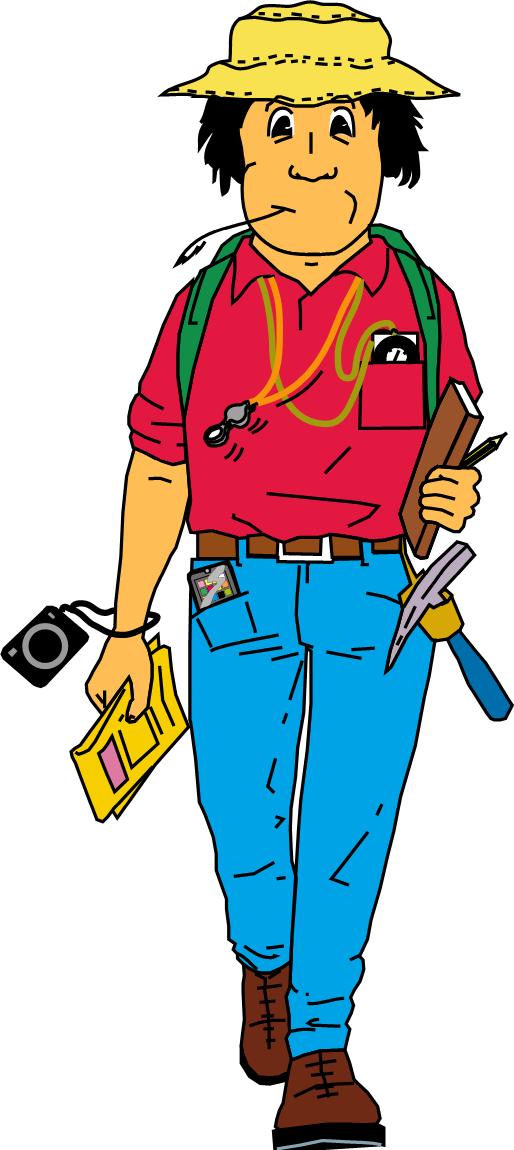
Is an essential element (both in winter and summer). Many types of hats can be useful, but the most suitable will be made of breathable fabric and will have wide brims to protect us from the sun..
The backpack must be large enough to be able to put all the material that we will have to take to the field and all the clothes that, perhaps we will not use all the time (such as the anorak, which can be quite bulky). Generally, with a 20-liter backpack we will have enough. Ideally, the best option is a backpack specially designed for going to the mountains (with stitches and resistant and waterproof materials).
It is absolutely essential to go to the field well fed. Sufficient food and drinks must be brought. Depending on each person, the weather and the time when we go to the field, we can take other accessories for hiking: sunscreen, gloves and scarf, GPS, reflective vest, multipurpose knife, binoculars, etc.
The magnifying glass will allow us to see certain details magnified that, at first glance, can go unnoticed. A magnifying glass with about 10 magnification can be very useful. Sometimes magnifying glasses with two lenses with different magnifications are used, mounted on the same chassis.
The compass will help us to take geological data in the field (orientations of planes or lines), but also to locate ourselves (orientation of maps, knowing which direction we should go, etc ...). It will be essential that a clinometer and a level be incorporated. The best compasses (which are also the most expensive) are usually metal or have a rigid housing, but geologists will work very well with resistant plastic and lidded models. For its transport, a case to hang on the belt or a string to carry it around the neck can be very useful.
Sometimes it can be very useful to take a photograph to complete the observations we make in the field. Some digital cameras take up very little space and can do very well in the long run.
Many functions and applications associated with mobile devices make them an essential tool for work in the field. Apart from the obvious connection that it provides us, the uses of smartphones are currently endless. In field work they can be used to store voice data, photos and videos. They can also be used to orient us, to geoposition the sites, to draw, to measure directions and inclinations, to enlarge images, to connect to the internet ... Today, mobile devices are essential when working in the field.
The field notebook that can best serve us will be a hard cover, half-page dimensions and a bound spine. A tip: it is important, before going to the field or every so often, to make security photocopies of the notebook. It can also be very useful to put the name and a contact telephone number in case we lose it.
To make annotations in the field, (in the notebook, maps, aerial photographs, etc.) we will use normal and colored pencils. We can use mechanical pencils and wooden pencils, but often both types will be very useful. We will also have to bring a spare eraser and pencil sharpener or leads. Using a case can also be very helpful.
Topographic and geological maps on paper or their digital consultation are essential to guide us and to contextualize field observations.
A geologist's hammer is more robust than a hammer and consists of the following parts:
- A flat-ended head (for breaking rock samples) and a pointed head (either chisel or pick). The chisel shape is often used for soft materials or for separating sheets. The spike shape is used for maximum pressure or prying, especially on hard materials.
- A handle, made of wood or metal. The wooden handles eventually break under heavy use, but can be exchanged for another replacement handle. Metal-handled hammers are one-piece with the head and the handle is usually nylon-coated. Metal-handled hammers are more expensive, but they are virtually indestructible.
The hammer is also often used as a scale for photographs.
Footwear is very important. It is recommended that you get advice from sports stores, asking for mid-mountain or trekking boots. They must have the following characteristics:
- They should be with a cane (with ankle protection), to avoid sprains, which are frequent when working on rough terrain
- They should not be very rigid like hiking boots. Some flexibility will be necessary to be able to carry out field work.
